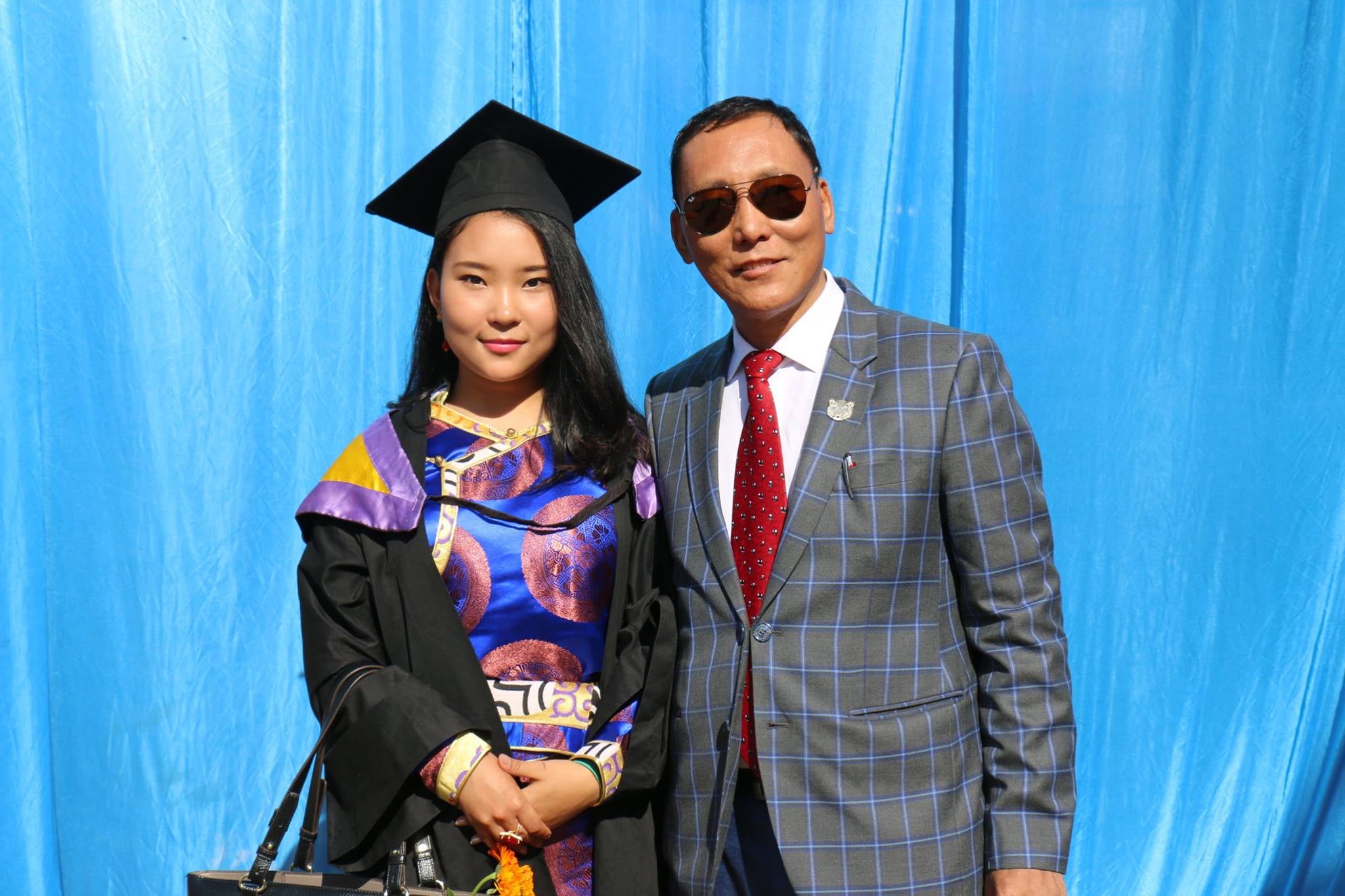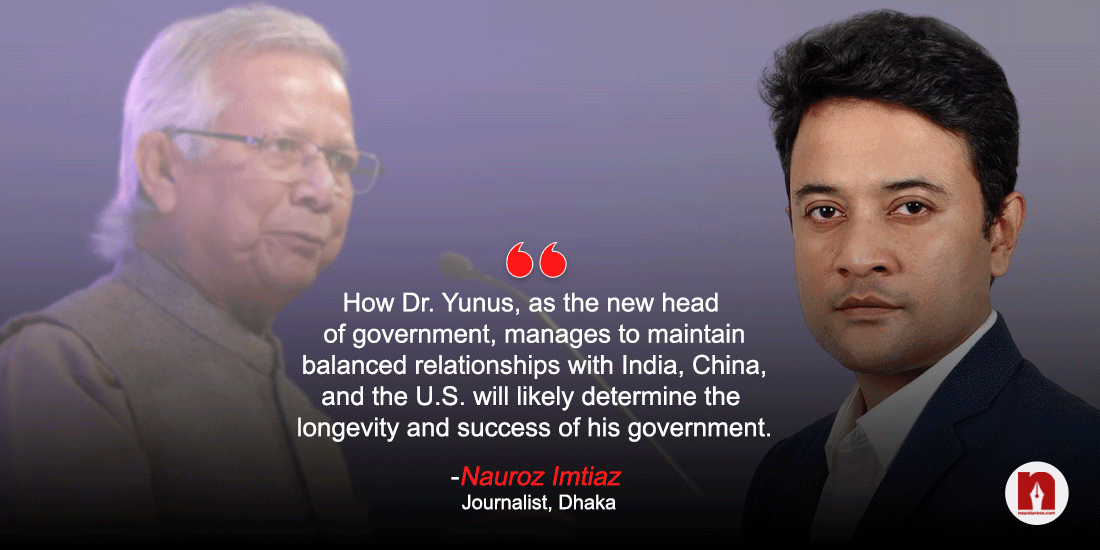Artificial Intelligence can help youths in career development

Artificial Intelligence (AI) refers to the simulation of human intelligence in machines that are programmed to think and learn like humans. It encompasses a wide range of techniques and approaches aimed at enabling computers or machines to perform tasks that typically require human intelligence.
The exact definition of AI can vary depending on the context, but at its core, AI involves the development of computer systems or algorithms that can analyze and interpret data, reason and make decisions, and adapt and learn from experience. AI systems strive to replicate or mimic human cognitive abilities such as perception, understanding natural language, problem-solving, and pattern recognition.
AI can be broadly classified into two categories: narrow or weak AI and general or strong AI. Narrow AI refers to AI systems designed to perform specific tasks or functions, such as speech recognition, image classification, or playing chess. These systems are specialized and focused on a specific domain. On the other hand, general AI refers to AI systems that possess the ability to understand, learn, and apply knowledge across a wide range of tasks and domains, similar to human intelligence. General AI aims to exhibit human-like intelligence and flexibility.
AI encompasses various subfields and techniques, including machine learning, deep learning, natural language processing, computer vision, expert systems, and robotics. Machine learning, in particular, is a fundamental aspect of AI and involves training algorithms to automatically learn and improve from data without being explicitly programmed. Deep learning, a subset of machine learning, utilizes artificial neural networks to process and interpret complex data structures.
The applications of AI are extensive and diverse, ranging from virtual personal assistants like Siri and Alexa, recommendation systems, autonomous vehicles, fraud detection, healthcare diagnostics, to complex tasks like drug discovery, weather prediction, and financial analysis.
AI in workplace
AI has found widespread applications in various aspects of the workplace, revolutionizing how tasks are performed, improving efficiency, and enabling new capabilities. A few examples of AI in the workplace today:
- Intelligent automation: AI-powered automation systems streamline repetitive and mundane tasks, freeing up employees to focus on more strategic and creative work. For example, chatbots and virtual assistants can handle customer queries, schedule appointments, or provide basic support, reducing the workload on customer service teams.
- 2. Data analysis and insights: AI enables advanced data analysis, allowing businesses to extract valuable insights and make data-driven decisions. Machine learning algorithms can process vast amounts of data quickly, identifying patterns, trends, and anomalies.
- Natural language processing (NLP): NLP techniques enable machines to understand and interpret human language. AI-powered chatbots and virtual assistants use NLP to interact with employees and customers, providing information, answering queries, or assisting with tasks. NLP also supports sentiment analysis, content summarization, and language translation.
- Human resources and talent management: AI is being used in recruitment processes to automate candidate screening, analyze resumes, and identify suitable candidates. AI-powered tools can also assess employee performance, identify skill gaps, and recommend training programs.
- Intelligent virtual collaboration: AI technologies enhance virtual collaboration among teams. Features like real-time language translation, document summarization, and meeting transcription facilitate seamless communication and knowledge sharing across diverse teams and languages.
- Cybersecurity and fraud detection: AI algorithms can analyze network traffic, user behavior, and system logs to detect anomalies and potential security threats. AI-powered systems help in identifying and mitigating cyber-attacks, protecting sensitive data, and preventing fraud.
- Art creation: AI is increasingly being used in art creation, pushing the boundaries of creativity and offering new possibilities for artists.
These examples represent just a fraction of the many ways AI is transforming the workplace. As AI continues to evolve, it holds the potential to revolutionize various industries, improve productivity, and create new opportunities for innovation and growth.
AI in identifying career interests and goals
AI can play an important role in helping youths identify their career interests and goals by leveraging data analysis, personalized assessments, and targeted recommendations.
- Skills and interest assessments: AI-powered platforms can administer assessments that analyze an individual’s skills, strengths, weaknesses, and interests. By analyzing the results, AI algorithms can provide insights into potential career paths that align with their skills and interests.
- Data analysis: AI can analyze large sets of career-related data, such as job descriptions, industry trends, and salary information. By examining patterns and correlations within this data, AI algorithms can identify career fields or industries that match an individual’s interests and goals.
- Personalized recommendations: AI-powered career guidance platforms can provide personalized recommendations based on an individual’s skills, interests, and career aspirations. By analyzing user data and comparing it with career profiles, job market trends, and success factors, AI algorithms can suggest suitable career paths, educational programs, and skill development opportunities tailored to each individual’s unique goals.
- Real-world insights: AI platforms can provide insights into real-world career experiences by aggregating and analyzing information from professionals in various fields. These insights can include details about job responsibilities, work-life balance, career progression, and industry-specific knowledge.
- Interactive career exploration: AI-powered tools can offer interactive career exploration experiences. Virtual reality (VR) or augmented reality (AR) applications can simulate work environments, allowing youths to gain firsthand experiences of different careers.
- Peer and expert connections: AI platforms can facilitate connections with peers and industry professionals who share similar interests or work in desired fields. By analyzing user profiles and interests, AI algorithms can recommend networking opportunities, mentorship programs, or professional communities where youths can engage with experienced professionals and gain valuable insights and guidance.
AI in finding jobs
AI can assist youths in finding and applying for jobs by streamlining the job search process, providing personalized recommendations, and enhancing the application experience.
- Job matching: AI-powered job platforms can analyze job descriptions, candidate profiles, and user preferences to match individuals with relevant job opportunities. By leveraging machine learning algorithms, these platforms can provide personalized job recommendations based on an individual’s skills, experience, and career aspirations. This increases the likelihood of finding suitable job openings that align with their interests and qualifications.
- Resume optimization: AI tools can help youths optimize their resumes by providing suggestions for content, formatting, and keyword optimization. These tools can analyze job descriptions and provide guidance on tailoring resumes to specific positions, ensuring that resumes are effectively customized to catch the attention of recruiters and applicant tracking systems.
- Application assistance: AI-powered platforms can offer guidance and support throughout the application process. For instance, they can provide tips on writing cover letters, preparing for interviews, and showcasing relevant skills. Some AI tools can even simulate interview scenarios and provide feedback on responses, helping youths refine their application materials and interview skills.
- Job market insights: AI algorithms can analyze labor market data, industry trends, and economic indicators to provide insights into job market conditions and emerging career fields. This information can help youths identify areas with high demand for specific skills, allowing them to make more informed decisions when applying for jobs and tailoring their applications to the most promising sectors.
- Automated application tracking: AI-powered applicant tracking systems (ATS) can streamline the application process for both job seekers and employers. ATS software can automatically parse resumes, extract relevant information, and rank candidates based on their qualifications. These speeds up the screening process, allowing youths to be considered for job opportunities more efficiently.
- Interview preparation: AI tools can assist youths in preparing for job interviews by simulating interview scenarios and providing feedback on their responses. These tools can analyze verbal and non-verbal cues, evaluate communication skills, and offer personalized recommendations for improvement. By using AI-powered interview preparation tools, youths can enhance their interview performance and increase their chances of success.
- Networking and mentorship: AI-powered platforms can connect youths with industry professionals, mentors, and peers who can provide guidance, support, and networking opportunities. AI algorithms can match individuals based on their career interests, industry preferences, and goals, facilitating meaningful connections that can lead to job referrals and mentorship relationships.
These examples demonstrate how AI can simplify and enhance the job search and application process for youths, making it more efficient, personalized, and guided. By leveraging AI-powered tools and platforms, youths can find relevant job opportunities, optimize their application materials, and improve their chances of securing meaningful employment.
Challenges of using AI in career development
While AI offers numerous benefits in career development, there are also several challenges to consider.
- Lack of human interaction: AI systems can provide guidance and recommendations, but they may lack the human touch and personalized support that individuals may need during their career development journey. Human interaction, empathy, and nuanced understanding of individual circumstances can be difficult to replicate with AI alone.
- Bias and fairness: AI algorithms are trained on existing data, which may contain biases and inequalities present in society. This can inadvertently perpetuate biases in career recommendations, job matching, and skill assessments. It’s crucial to address and mitigate bias in AI systems to ensure fair and inclusive career development opportunities for all individuals.
- Limited contextual understanding: AI algorithms may struggle to understand the unique circumstances, context, and complexities of an individual’s career goals. Career decisions often involve subjective factors, personal values, and external circumstances that may not be adequately captured or understood by AI systems. Human advisors and mentors are essential for providing contextual understanding and guidance.
- Skills gap identification: AI-based skill assessments may have limitations in accurately identifying the skills individuals possess or need to develop. The dynamic nature of the job market and evolving skills requirements can challenge AI systems in keeping up with emerging skills or recognizing the full range of transferable skills that individuals possess.
- Ethical and privacy concerns: AI in career development raises ethical concerns regarding the use of personal data and privacy. Collecting and analyzing individuals’ data for career guidance purposes must be done transparently and with informed consent. Protecting privacy and ensuring data security are crucial considerations when implementing AI in career development systems.
- Limited career field representation: AI systems may be biased towards certain popular or well-known career fields, potentially overlooking or underrepresenting niche or emerging industries. This could limit the range of career options presented to individuals and hinder their exploration of non-traditional or unconventional paths.
- Continuous adaptation and updates: The rapid pace of technological advancements and changes in the job market necessitate regular updates and adaptations of AI systems. Keeping AI models and algorithms up to date with the latest trends, skills, and industry demands can be challenging and requires ongoing efforts and resources.
Addressing these challenges requires a thoughtful and balanced approach, combining the benefits of AI with human expertise and intervention. Ethical considerations, diversity, and inclusivity must be prioritized to ensure that AI in career development provides accurate, unbiased, and holistic support to individuals navigating their career paths.
Animation enthusiast Abinash Gajurel is a student. He can be reached at: [email protected]














